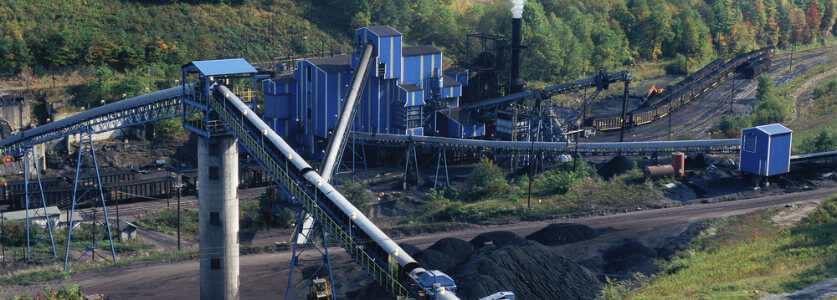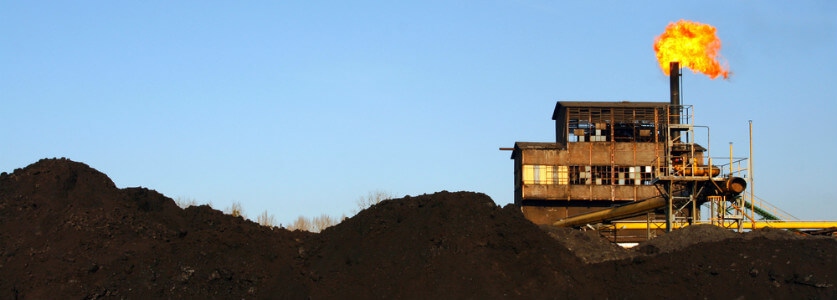What Is Coal Bed Methane? – CBM Extraction Methods
August 06, 2019
Coal bed methane (CBM), an important unconventional gas occurring naturally in coal beds, is increasingly being used for industrial and utility purposes.
Learn what coal bed methane is, its unique gas composition, physical properties, and uses and explore the most prominent coal bed methane extraction processes.
What Is Coal Bed Methane?
Coal bed methane (CBM) is a form of natural gas which can be recovered from coal deposits or coal seams (a coal deposit is a geographical location containing mineable accumulations of coal while a coal seam is entrapment of coal in underlying rock).

The gas is formed during the natural conversion of plant material into coal, known as coalification. When coalification occurs, the coal becomes saturated with water and methane gas is trapped within it. CBM can be recovered from coal deposits and seams through drilling and extraction (the exact recovery process will be discussed in a subsequent section of this article).
CBM Gas Composition
The composition of CBM in a sample of coal varies widely across several locations in the country. Generally, it consists predominantly of methane gas (CH4) although it can contain trace amounts of ethane (C2H6), carbon dioxide (CO2) and water (H2O).
Citing figures from a report published on the United States Geological Survey (USGS) website, CBM in Virginia consists of about 96.6% methane gas with a calorific value of about 990 Btu/cf. Similarly, the figures from coal deposits and seams in Pennsylvania were around 94% methane gas with a calorific value of 979 Btu/cf.
The total CBM content in a core sample is calculated as the sum of three components – desorbed gas, lost gas, and residual gas.
- Desorbed gas refers to CBM that has been released from the coal surface via the coal matrix.
- Lost gas is CBM lost during the extraction process due to leakages, subsurface temperature or pressure variance, venting and other factors.
- Free gas is CBM freely available or saturated with water present in the coal bed.
What Is Coal Bed Methane Used for?
According to the American Geosciences Institute (AGI), the U.S. produced 1 trillion cubic feet of CBM in the year 2017. Coal bed methane and its by-products are suitable for a host of industrial applications, notably:
Power Generation
In the last few decades, CBM has become increasingly used as a source of energy in North America. For example, it can be used in place of natural gas in gas turbines for power generation.
Manufacturing
CBM can also be used as a feedstock for manufacturing fertilizers and plastics.
Transportation
Coal bed methane can be converted into other types of hydrocarbons like diesel and gasoline commonly used as fuel for automobiles.
Controversy Surrounding Coal Bed Methane Gas Production
The controversy surrounding coal bed methane extraction has to do with the use of water during the process and its impact on global climate change. Coal bed methane exploration involves pumping large volumes of water out of coal seams to reduce the hydrostatic pressure and liberate the gas.
The produced water from coal bed methane wells has a fairly high salinity (due to dissolved sodium bicarbonate ions or chlorides) making it unsuitable for certain agricultural activities due to adverse and long-term chemical or physical effects on soil structure.

The EPA states that it is not actively developing effluent controls for the CBM industry as current technologies for analyzing coal bed methane produced water are not economically viable. However, it mandates CBM operators to have an NPDES permit for the disposal of wastewater.
Also, CBM is a fossil fuel which releases CO2, a known greenhouse gas during combustion. Moreover, its main component, methane, offers up to 72 times more global warming potential (GWP) per unit mass than CO2.
CBM Production Techniques
To carry out CBM production, a steel-cased hole is drilled into the coal seam and the underground (produced) water is pumped out through tubing. Removal of produced water helps reduce the hydrostatic pressure within the coal bed, causing the gas to be desorbed from its surface.
As production occurs, the change in pressure alters the porosity and permeability of the coal bed. The recovered gas is sent into a natural gas pipeline or air compressor system.
How to Handle Coal Bed Methane Produced Water?
CBM produced water can be handled in several ways to minimize its impact on the environment. The produced water can be sent to a wastewater treatment plant for purification before it is disposed or reused, re-injected into another section of the formation, or sent to an evaporation pond for desalination.
Contact GENERON for The Gas Separation Technology You Need
For over four decades, GENERON has been at the forefront of cutting-edge design and manufacture of compressed air and process equipment for a wide range of industries. The GENERON® Coal Bed Methane Treatment system supports the optimal recovery of coal bed methane gas to meet the most challenging energy needs.
For more information about our product offerings or to request a quote, please contact us online today!
